Bathtub
How to Reglaze a Bathtub
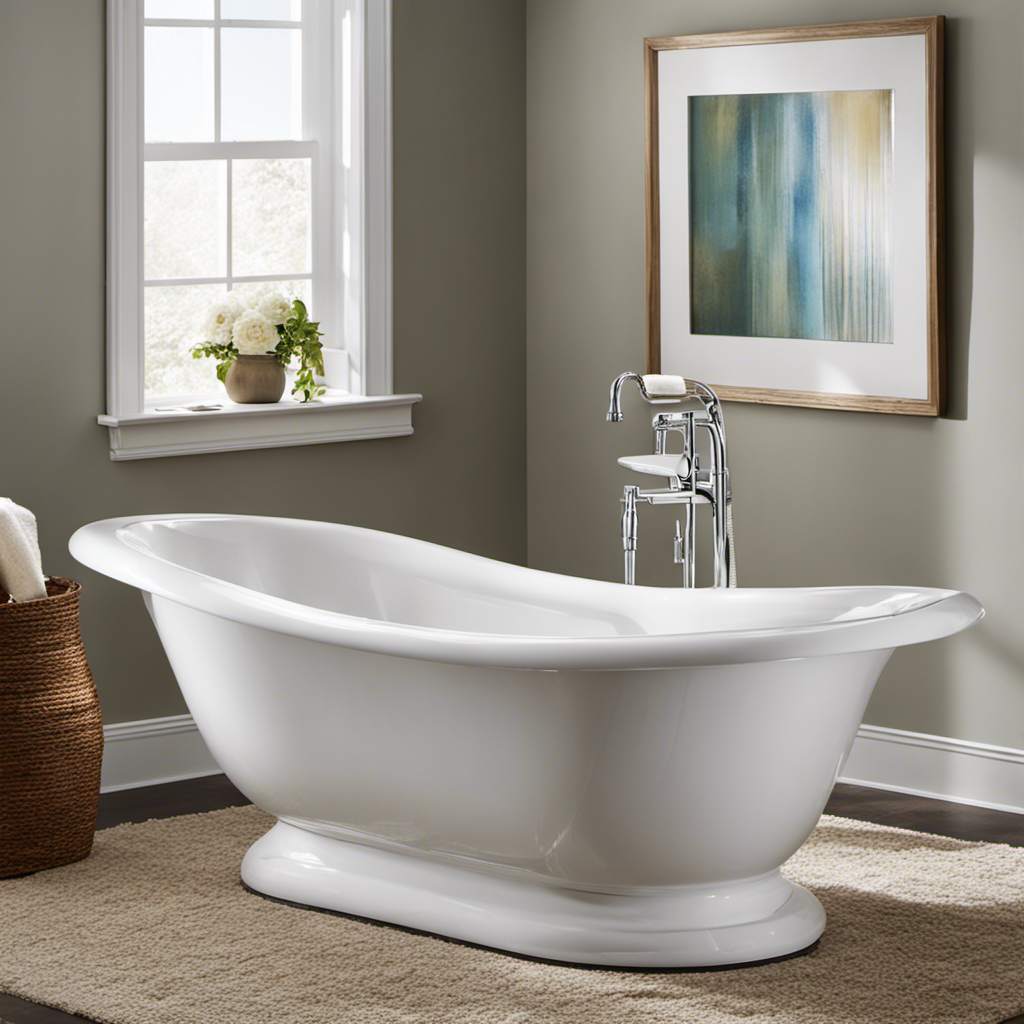
Imagine stepping into a sparkling, rejuvenated bathtub that looks as good as new. In this article, I’ll guide you through the process of reglazing a bathtub, transforming it from worn and dull to fresh and beautiful.
As a bathroom renovation specialist, I understand the importance of providing detailed and accurate information. I’ll explain each step, from preparing the surface to applying the reglazing solution, all while using clear language and avoiding unnecessary jargon.
Get ready to give your bathtub the makeover it deserves.
Key Takeaways
- Thoroughly clean the bathtub surface using a non-abrasive cleaner and a soft sponge or cloth.
- Properly prepare the surface by sanding, smoothing out chips, and applying primer for better adhesion.
- Choose the right chemicals for removing the old finish based on safety and environmental considerations.
- Utilize effective cleaning methods such as baking soda and hydrogen peroxide, mild dish soap and warm water, or vinegar and water to clean the bathtub surface.
Preparing the Bathtub Surface
Now, you’ll need to start by thoroughly cleaning the bathtub surface before you can begin the reglazing process. Proper surface cleaning is crucial to ensure that the reglazing material adheres properly and provides a smooth and durable finish.
Begin by removing any debris, soap scum, or residue using a non-abrasive cleaner and a soft sponge or cloth. Make sure to rinse the bathtub thoroughly with clean water to remove any cleaning product residue.
After cleaning, it’s important to address any chips, cracks, or rough areas on the surface. Use a sandpaper or abrasive pad to gently smooth out these imperfections.
Once the bathtub is clean and smooth, you can move on to the priming techniques, which will help the reglazing material adhere better and ensure a long-lasting finish.
Cleaning and Removing Old Finish
When it comes to reglazing a bathtub, proper surface preparation is essential. There are various techniques that can be used to prepare the bathtub surface, such as sanding, etching, or using a chemical deglosser.
Additionally, it’s important to use the right chemicals for removing the old finish, as different types of finishes require different products.
Lastly, the best cleaning methods include using a non-abrasive cleaner and scrubbing the surface thoroughly to remove any dirt, grime, or soap scum before applying the new finish.
Surface Preparation Techniques
Before starting the reglazing process, it’s important to properly prepare the surface of the bathtub.
Surface preparation techniques are crucial for ensuring a successful reglazing project.
First, thoroughly clean the bathtub using a mild abrasive cleaner and scrubbing brush to remove any dirt, grime, or soap scum. Rinse the surface thoroughly and allow it to dry completely.
Next, use fine-grit sandpaper to lightly sand the entire bathtub to create a rough surface for the new finish to adhere to. Be sure to wear a dust mask and protective eyewear to prevent inhalation of dust particles.
After sanding, wipe down the bathtub with a tack cloth to remove any dust residue.
Lastly, apply painter’s tape to protect any areas you don’t want to be reglazed, such as the surrounding tiles or fixtures.
Following these surface preparation techniques will help to ensure a smooth and long-lasting reglazing finish.
Chemicals for Removing Finish
It’s essential to choose the right chemicals for removing the old finish from the bathtub surface. When reglazing a bathtub, it’s important to prioritize chemical safety precautions and consider eco-friendly alternatives. Here are some commonly used chemicals for removing the old finish and their eco-friendly alternatives:
| Chemicals | Eco-Friendly Alternatives | Safety Precautions |
|---|---|---|
| Paint stripper | Soy-based paint stripper | Wear gloves and eye protection, work in a well-ventilated area |
| Acid etching solution | Citric acid or vinegar | Avoid direct contact with skin or eyes, use in a well-ventilated area |
| Abrasive cleaners | Baking soda or hydrogen peroxide | Avoid inhalation and skin contact, use gloves and goggles |
Best Cleaning Methods
The best way to clean the bathtub surface is by using a mixture of baking soda and hydrogen peroxide. This combination is effective in removing dirt, grime, and soap scum without damaging the bathtub’s finish.
Here are some other cleaning methods that professionals recommend for maintaining a clean and shiny bathtub:
- Use a mild dish soap and warm water to scrub the surface gently.
- For stubborn stains, make a paste using baking soda and water, apply it to the stain, and let it sit for a few minutes before scrubbing.
- Vinegar is also a great natural cleaner. Mix equal parts vinegar and water, spray it onto the surface, and wipe it clean.
- Avoid abrasive cleaners or scrub brushes that can scratch the surface.
While these cleaning methods work well for regular maintenance, it’s important to note that for deep stains or damaged finishes, professional reglazing services may be required. These experts have the knowledge and tools to restore your bathtub to its original shine, using the best cleaning products and techniques.
Repairing Any Damaged Areas
When reglazing a bathtub, it is important to address any cracks and chips in the surface before proceeding. To fill these damaged areas, start by cleaning them thoroughly and then apply an epoxy filler specifically designed for bathtub repairs. Allow the filler to dry completely before moving on to the next step.
Additionally, sanding rough surfaces is crucial for achieving a smooth and even finish. Use a fine-grit sandpaper or a sanding block to gently sand the entire bathtub surface, focusing on any areas that feel rough or uneven. This will create a clean and smooth surface for the reglazing process.
Filling Cracks and Chips
To fill the cracks and chips in your bathtub, you’ll need to start by cleaning the damaged areas with a mild detergent. This will ensure that the surface is free from dirt, grime, and any other substances that could affect the adhesion of the filler material.
Once the area is clean and dry, you can proceed with filling the cracks and chips. Here are some important steps to follow:
- Apply a bathtub filler or epoxy resin to the damaged areas.
- Smooth out the filler material using a putty knife or sandpaper.
- Allow the filler to dry completely before proceeding to the next step.
- Sand the filled areas to create a smooth and even surface.
Filling cracks and chips is an essential part of bathtub refinishing techniques. By properly addressing these imperfections, you can ensure a high-quality and long-lasting reglazing result.
Now that the cracks and chips have been filled, let’s move on to sanding rough surfaces.
Sanding Rough Surfaces
After filling any cracks or chips in the bathtub, the next step in reglazing is to sand the rough surfaces to create a smooth and even finish. Proper sanding techniques and selecting the right sandpaper are essential for achieving a professional-looking result.
When sanding the bathtub, it is important to use a fine-grit sandpaper, such as 220 or 320 grit, to avoid damaging the surface. Start by wetting the bathtub with water and then gently sand the rough areas in a circular motion. Be sure to remove any loose debris or old paint before proceeding.
To help you better understand the sanding process, here is a table summarizing the key points:
| Step | Sanding Technique | Sandpaper Grit |
|---|---|---|
| 1 | Wet sanding | 220 or 320 |
| 2 | Circular motion | |
| 3 | Remove debris |
Remember to take your time and be thorough when sanding the bathtub. This will ensure a smooth and flawless surface for the reglazing process.
Applying Masking Tape and Drop Cloths
Make sure you’ve got your masking tape and drop cloths ready to protect the surrounding areas before you begin reglazing the bathtub. This step is crucial in preventing any accidental spills or splatters that could damage your bathroom fixtures or flooring.
Here are some tips for beginners to ensure a successful reglazing process:
- Start by thoroughly cleaning the bathtub surface to remove any dirt, grime, or soap scum. This will help the new glaze adhere better.
- Apply masking tape along the edges of the bathtub to create clean lines and prevent any overspray onto surrounding areas.
- Lay drop cloths or plastic sheets on the floor and other nearby surfaces to catch any drips or spills during the reglazing process.
- Use a high-quality masking tape that is specifically designed for painting or refinishing applications to ensure it adheres well and doesn’t leave any residue behind.
Common mistakes to avoid include rushing through the preparation process and not properly securing the drop cloths, which can result in messy clean-up or damage to the surrounding areas. Taking the time to properly apply masking tape and lay drop cloths will make the reglazing process smoother and protect your bathroom from any unnecessary damage.
Mixing and Preparing the Reglazing Solution
Now that you’ve thoroughly cleaned the bathtub surface, it’s time to mix and prepare the reglazing solution.
To ensure a successful reglazing process, it is crucial to follow the correct mixing techniques.
First, gather all the necessary materials, including the reglazing solution, catalyst, and a clean mixing container.
Carefully read the instructions provided by the manufacturer to determine the correct ratio of solution to catalyst.
Pour the required amount of reglazing solution into the container, followed by the catalyst.
Use a stir stick or mixing paddle to blend the two components together thoroughly.
Common mistakes to avoid during this step include using inaccurate measurements or failing to mix the solution properly, resulting in an uneven finish.
Take your time and ensure the solution is mixed evenly to achieve the best possible outcome.
Applying the Reglazing Solution to the Bathtub
Once the reglazing solution has been prepared, it’s crucial to apply it evenly across the surface for best results. Here are some tips for a successful reglazing application:
- Start at one end of the bathtub and work your way towards the other end, ensuring that the solution is spread evenly.
- Use a high-quality brush or roller to apply the reglazing solution, making sure to cover all areas, including corners and edges.
- Apply the solution in thin, even coats to prevent drips and bubbles from forming.
- Allow each coat to dry completely before applying the next one, following the manufacturer’s instructions for drying times.
By following these tips, you can achieve a smooth and professional finish when reglazing your bathtub.
Once the reglazing process is complete, it’s important to move on to the next step: curing and drying the reglazed bathtub.
Curing and Drying the Reglazed Bathtub
After applying the reglazing solution, it’s important to allow the bathtub to cure and dry completely for optimal results.
Caring for a reglazed bathtub involves taking certain precautions to prevent future damage. Once the reglazing process is complete, it is recommended to avoid using harsh chemicals or abrasive cleaners on the surface. Instead, use a non-abrasive cleaner and a soft sponge or cloth to clean the bathtub.
Regular cleaning and maintenance will help to keep the reglazed surface looking new for years to come. Additionally, it is important to avoid placing heavy objects or sharp items on the surface to prevent any scratches or chips.
By following these care instructions, you can ensure the longevity of your reglazed bathtub and enjoy its renewed appearance.
Now, let’s move on to the next step of the process, which involves removing the masking tape and cleanup.
Removing Masking Tape and Cleanup
To remove the masking tape and complete the cleanup, make sure to gently peel off the tape from the edges and use a damp cloth to wipe away any residue. Cleaning techniques are crucial in ensuring a successful reglazing process.
After removing the tape, it’s important to thoroughly clean the bathtub to remove any dust or debris. Here are some post reglazing care tips:
- Use non-abrasive cleaners: Avoid harsh chemicals or abrasive cleaners that can damage the reglazed surface.
- Regular cleaning: Clean the reglazed bathtub regularly using mild soap and water to maintain its shine and durability.
- Avoid abrasive tools: Do not use abrasive scrub brushes or scouring pads, as they can scratch the reglazed surface.
- Handle with care: Be cautious with heavy objects or sharp tools that can cause chips or scratches on the reglazed bathtub.
Following these cleaning techniques and post reglazing care tips will help keep your bathtub looking great for years to come.
Maintaining and Caring for a Reglazed Bathtub
You should regularly clean your newly refinished tub using mild soap and water to maintain its shine and durability. Bathtub maintenance is essential to prevent reglazing damage and keep your tub looking its best.
After reglazing, it is important to avoid using harsh chemicals or abrasive cleaners, as they can strip away the glaze and damage the surface. Instead, opt for gentle cleaning solutions that won’t harm the finish.
Regularly wipe down the tub after each use to remove any soap scum or residue. For tougher stains, you can use a non-abrasive cleaner and a soft sponge or cloth. Avoid using scrub brushes or abrasive pads, as they can scratch the surface.
Frequently Asked Questions
How Long Does It Take for the Reglazing Solution to Dry Completely?
The drying time of the reglazing solution can vary depending on several factors. Factors such as temperature, humidity, and ventilation can affect the drying time. It typically takes around 24-48 hours for the reglazing solution to dry completely.
Can I Use the Bathtub Immediately After Reglazing?
Yes, you can use the bathtub immediately after reglazing. The benefits of reglazing a bathtub immediately include a fresh, clean surface and the ability to use your bathroom without any waiting time.
What Type of Cleaning Products Should I Use on a Reglazed Bathtub?
When it comes to cleaning a reglazed bathtub, it’s important to use gentle, non-abrasive cleaning products. Avoid harsh chemicals or abrasive scrubbers that can damage the reglazing. Regular maintenance is key to preserving the finish.
Is It Possible to Reglaze a Bathtub With Significant Damage or Cracks?
Yes, it is possible to reglaze a bathtub with significant damage or cracks. However, it is important to consider other bathtub repair options as well. Reglazing has its pros and cons that should be weighed carefully.
How Long Does a Reglazed Bathtub Typically Last Before It Needs to Be Redone?
A reglazed bathtub typically lasts around 10-15 years before it needs to be redone. The lifespan can vary depending on factors such as usage, maintenance, and the quality of the reglazing job.
Conclusion
After following the step-by-step process of reglazing a bathtub, you can enjoy a fresh and revitalized look for your bathroom.
However, some may argue that hiring a professional is a better option. While it is true that professionals have the expertise and equipment to ensure a flawless finish, reglazing your bathtub yourself can be a cost-effective solution if you are willing to put in the time and effort.
By carefully following the instructions and taking your time, you can achieve impressive results and save money in the process.
Mateo’s flair for writing is matched only by his keen eye for design. As an interior designer turned writer, Mateo brings a unique perspective. He blends aesthetics with functionality in every piece he pens, providing readers with beautifully crafted content that’s also supremely useful.
Mateo loves exploring the latest bathroom tech trends and is our expert on smart toilets. When he’s not writing or designing, Mateo can be found sketching ideas for his next big project at local coffee shops.
Bathtub
Can You Manually Add Water to a Toilet Tank

Have you ever experienced the frustration of having a low water level in your toilet tank? We sympathize with the irritation and inconvenience it may bring.
But fear not, for we have the solution! In this article, we will show you how to manually add water to your toilet tank, ensuring a proper water level.
Follow our step-by-step instructions and maintain mastery over your plumbing system.
Let’s dive in and take control of the situation!
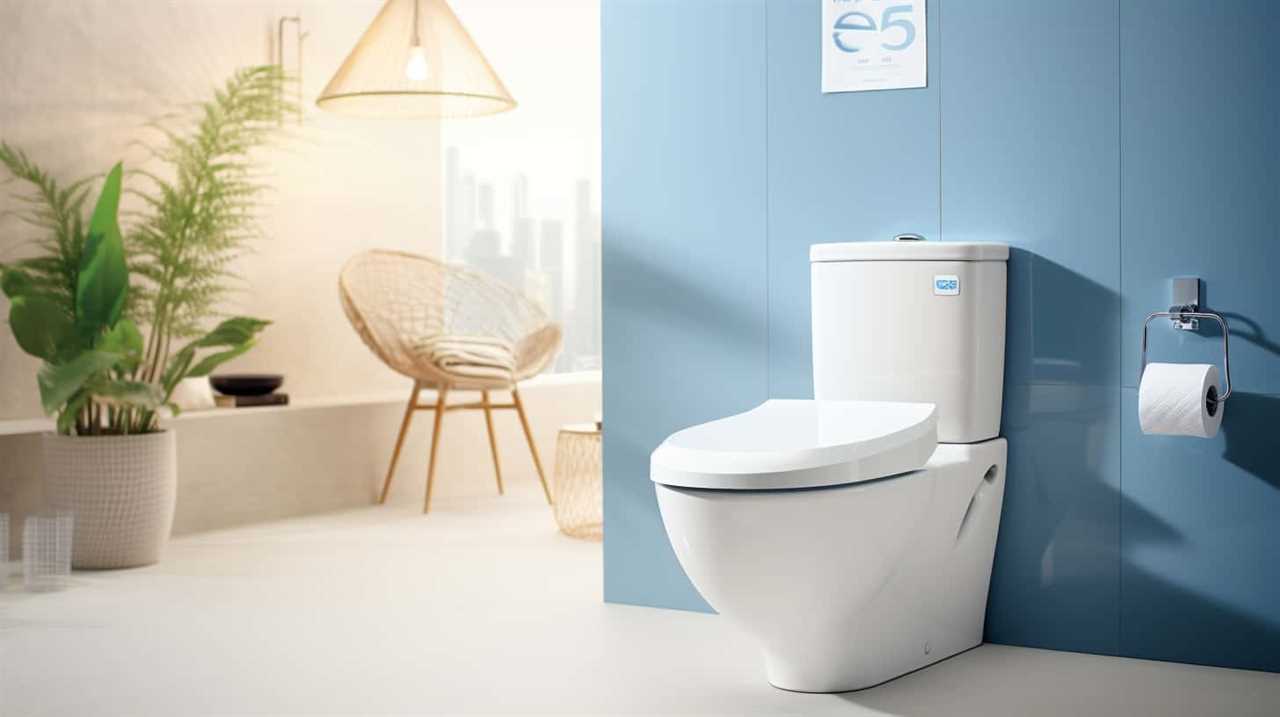
Key Takeaways
- Low water level in a toilet tank can lead to clogs and unpleasant odors.
- Adding water manually to the tank can help maintain the proper water level.
- Regularly checking for leaks, damage, and adjusting the fill valve can prevent low water levels.
- Troubleshooting common issues like tank leaks and faulty parts can help resolve water level problems.
Reasons for Low Water Level
One of the most common reasons for a low water level in our toilet tank is a faulty fill valve. A faulty fill valve prevents the tank from filling up to its proper level, which can lead to various issues such as toilet clogs.
It’s important to maintain the proper water level in the toilet tank as it ensures the effective flushing of waste and prevents clogs from occurring. When the water level is too low, it may not provide enough force to push the waste through the drain, resulting in a clog. Additionally, a low water level can also cause incomplete flushing, leaving behind residue and causing unpleasant odors.
To address this issue, we’ll need certain tools and materials.
Tools and Materials Needed
To manually add water to a toilet tank, we’ll need a few essential tools and materials. Here is a list of what you’ll need:
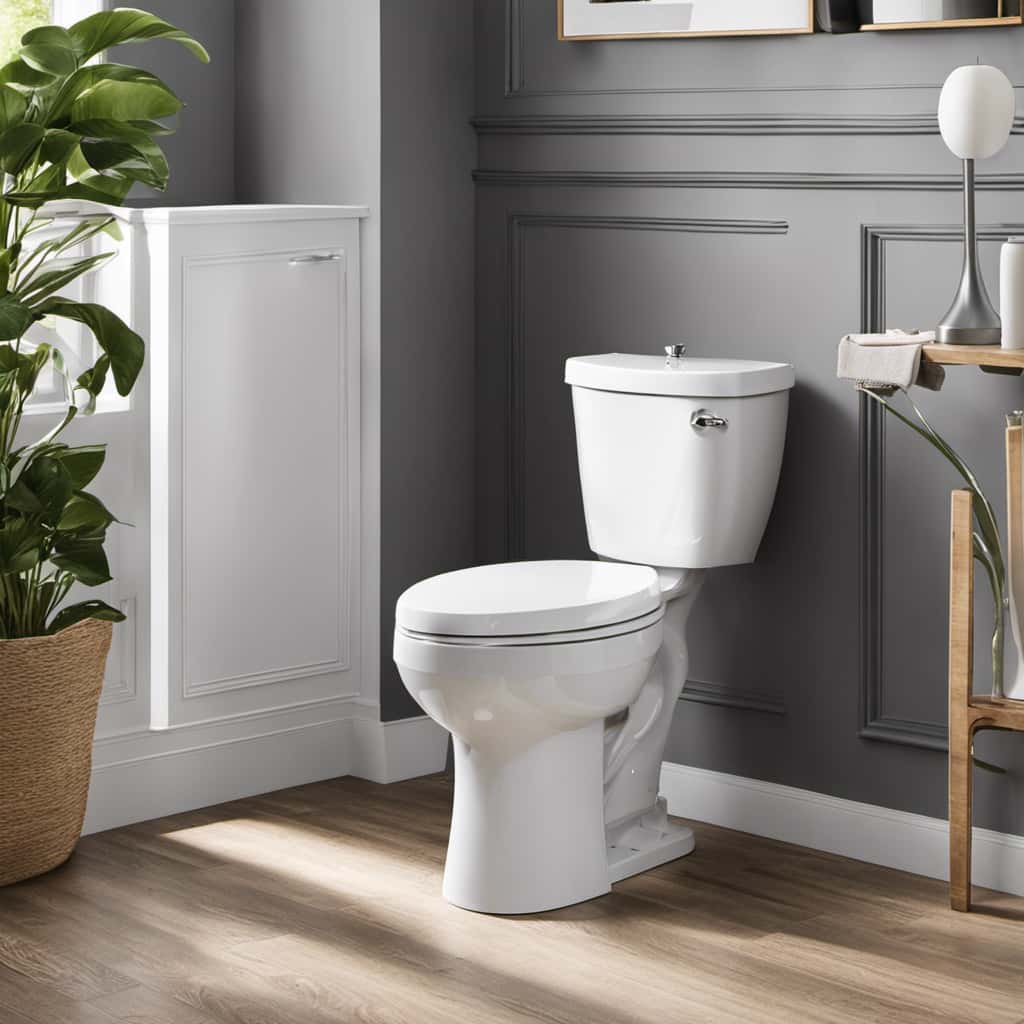
- Adjustable wrench: This tool is necessary for loosening and tightening the water supply line nut that connects the toilet tank to the water source.
- Bucket or container: You’ll need a container to hold the water that you’ll be adding to the toilet tank. A bucket or any other suitable container will work.
- Water: Fill the container with clean water to add to the toilet tank. Ensure that the water is free from contaminants to maintain the cleanliness of the tank.
- Towel or rag: It’s always a good idea to have a towel or rag handy to wipe up any spills or leaks that may occur during the process.
Step-by-Step Instructions
Now, let’s dive into the step-by-step instructions for manually adding water to a toilet tank.
Toilet tank maintenance is essential for the proper functioning of your bathroom fixture, especially if you have water-saving devices installed.
To manually add water to your toilet tank, follow these instructions carefully:
- Locate the water shut-off valve behind the toilet and turn it clockwise to shut off the water supply.
- Lift the toilet tank lid and place it aside in a safe spot.
- Inspect the tank for any visible leaks or damage.
- Locate the fill valve, which is connected to the water supply line, and locate the float. The float is a small plastic or metal device that controls the water level.
- Gently lift the float to the highest position, and hold it there.
- Slowly turn on the water shut-off valve counterclockwise to allow water to enter the tank.
- Keep an eye on the water level and release the float when the tank is filled to the desired level.
- Once the tank is filled, carefully place the tank lid back on and ensure it’s secure.
Following these step-by-step instructions will help you manually add water to your toilet tank effectively. Regular toilet tank maintenance is crucial to ensure the optimal performance of your water-saving devices.
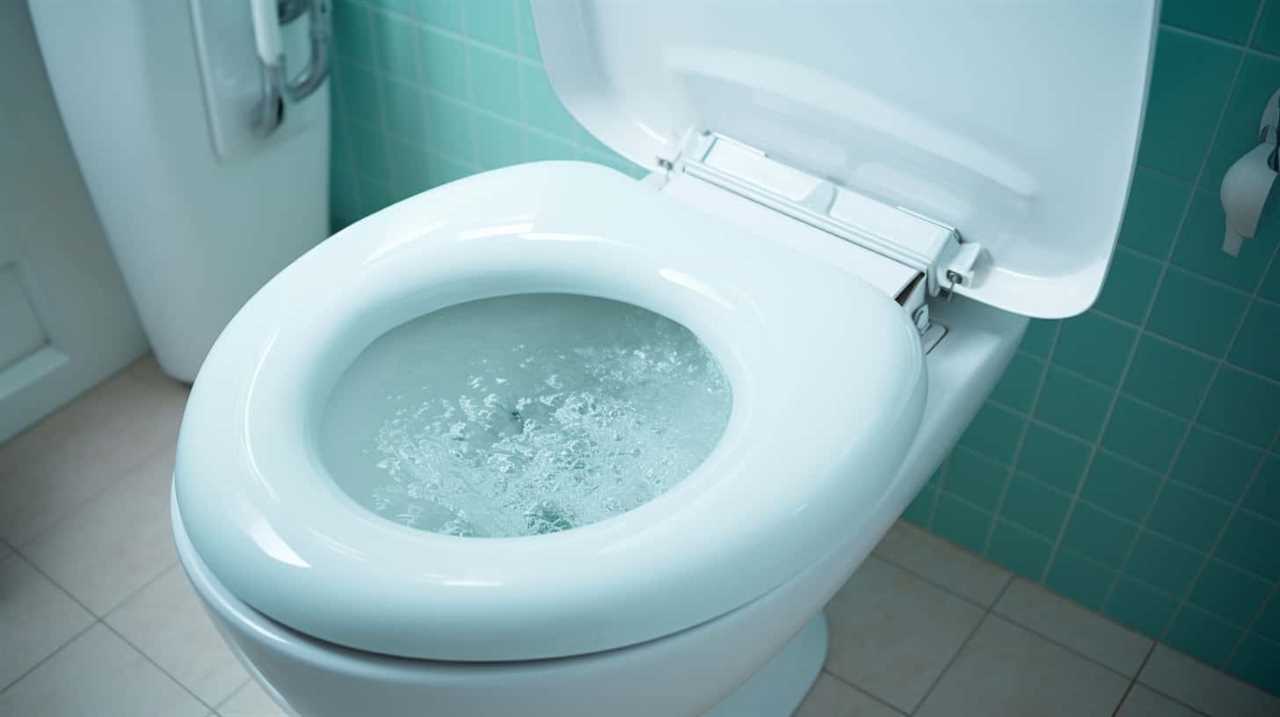
Tips for Maintaining Proper Water Level
To maintain the proper water level in your toilet tank, we recommend regularly checking for any leaks or damage and adjusting the fill valve as needed. Here are some tips for maintaining the proper water level:
- Importance of regular toilet maintenance: Regularly checking for leaks or damage can prevent water wastage and potential water damage to your bathroom.
- Benefits of using a water-saving toilet flush system: Upgrading to a water-saving toilet flush system can help reduce water consumption, saving you money on your water bills and contributing to environmental conservation.
- Adjust the fill valve: If you notice that the water level in your toilet tank is too low or too high, adjust the fill valve accordingly. This will ensure that the toilet flushes properly and efficiently.
- Check for leaks: Periodically check for any leaks in the toilet tank or the water supply line. Leaks can cause the water level to drop, leading to a less effective flush and potential water damage.
Troubleshooting Common Issues
When troubleshooting common issues with a toilet tank, we often encounter problems that can be easily resolved with basic maintenance.
Two common issues that can occur are toilet tank leaks and toilet tank float adjustment. Toilet tank leaks can lead to a constant water flow, resulting in wasted water and higher water bills. To fix this issue, it’s important to check the tank for any cracks or damage and replace any faulty parts, such as the flapper or fill valve.
Another common issue is an incorrect toilet tank float adjustment, which can cause the toilet to constantly run or not flush properly. Adjusting the toilet tank float to the correct water level can resolve this issue. It’s important to ensure that the float is properly positioned and not obstructed by any debris or other objects.
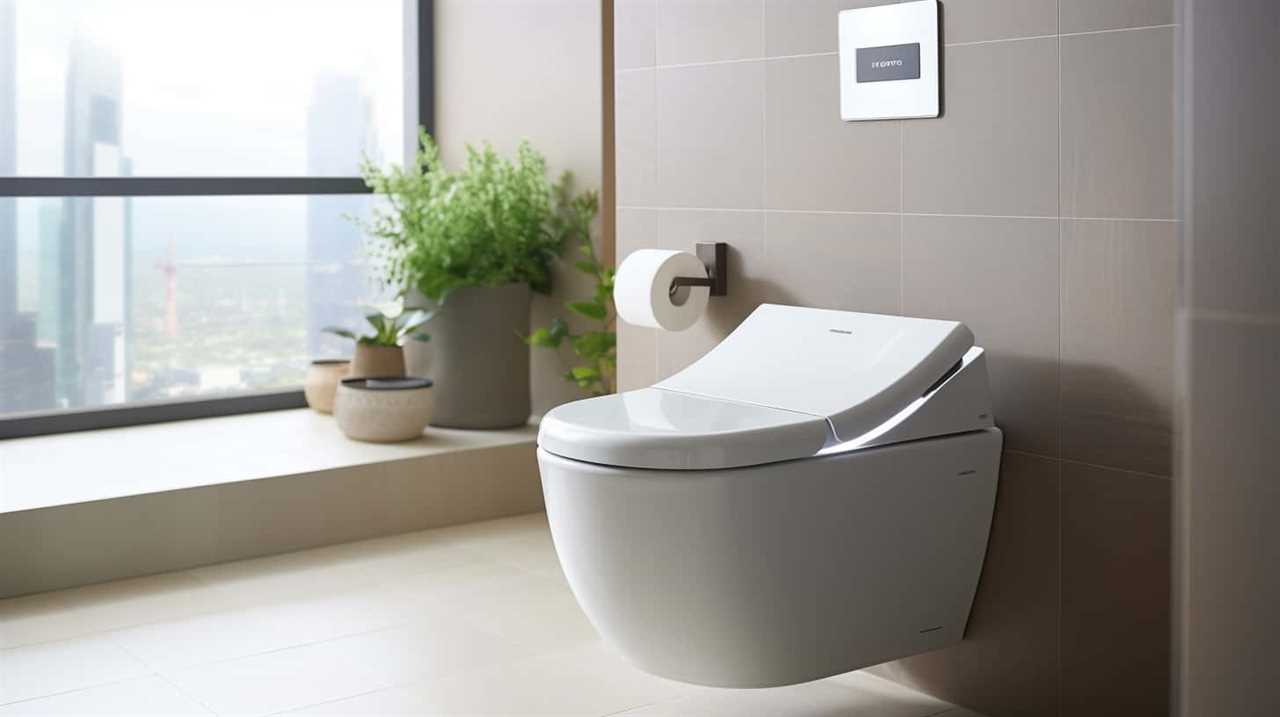
Frequently Asked Questions
Can I Use Any Type of Water to Manually Add to the Toilet Tank?
Yes, we can manually add water to a toilet tank. However, it is important to use clean, potable water to maintain water quality and prevent any potential damage to the tank or plumbing system.
How Often Do I Need to Manually Add Water to the Toilet Tank?
We should regularly check the water level in the toilet tank to ensure proper functioning. Using a measuring cup, we can manually add water as needed, maintaining the optimal level for flushing efficiency.
Is It Safe to Manually Add Water to the Toilet Tank While the Toilet Is in Use?
Yes, we can manually add water to a toilet tank for maintenance and troubleshooting of the water level. However, it is important to ensure the toilet is not in use to prevent any accidents.
Will Manually Adding Water to the Toilet Tank Fix Other Toilet-Related Issues?
Manually adding water to a toilet tank may temporarily fix some toilet-related issues, but it won’t address potential causes that require professional assistance. Troubleshooting and fixing common problems without water addition should be our first approach.
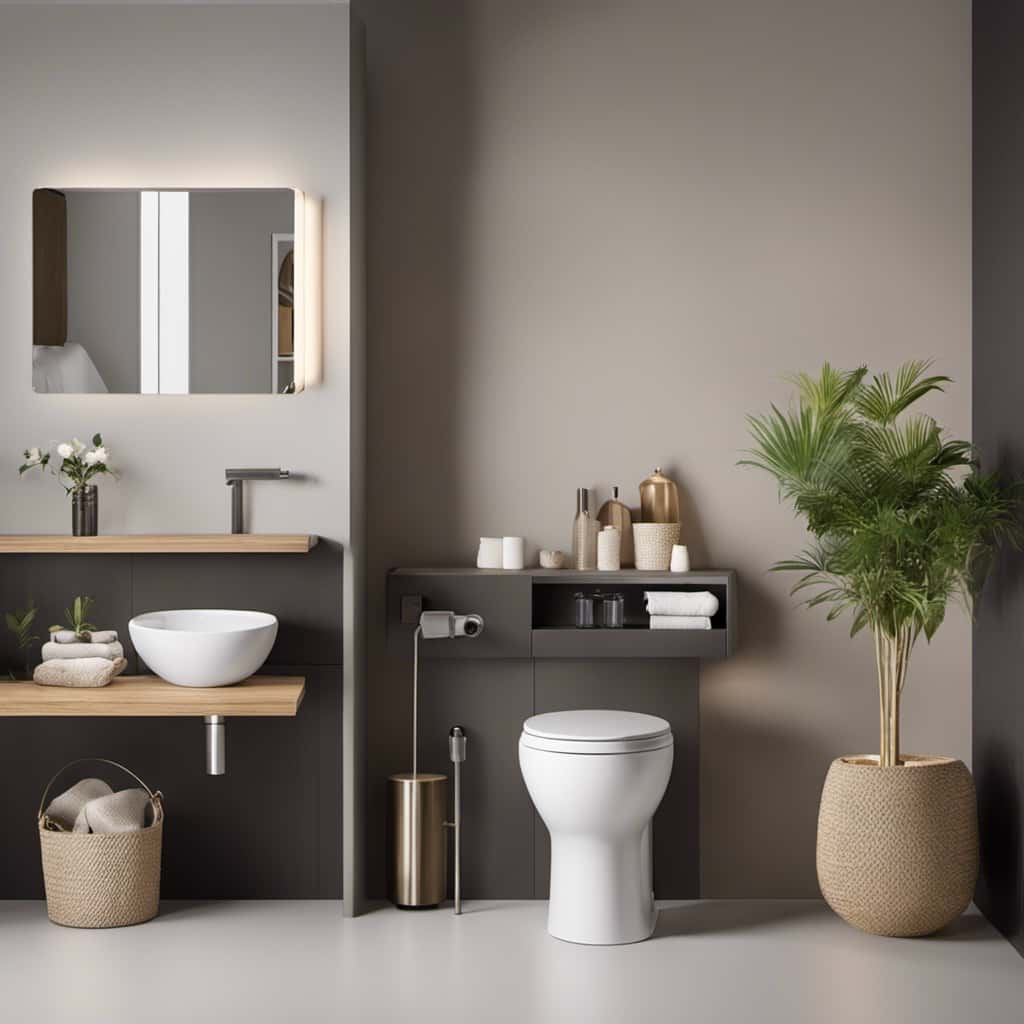
Can I Manually Add Water to the Toilet Tank if My Toilet Is Constantly Running?
Yes, you can manually add water to a toilet tank if it is constantly running. This can help maintain the water level and potentially fix the issue. It is important to identify and address the common causes of a constantly running toilet, as fixing it can save water and prevent damage.
Conclusion
In conclusion, manually adding water to a toilet tank is a simple and straightforward process. By following the step-by-step instructions and using the necessary tools and materials, you can easily maintain a proper water level in your toilet.
Remember to regularly check and adjust the water level to prevent any issues. Just like a well-tuned machine, a well-maintained toilet ensures smooth and efficient operation.
With an impeccable eye for detail and a passion for bathroom-related, Ava leads our editorial team gracefully and precisely.
Under her guidance, Best Modern Toilet has flourished as the go-to resource for modern bathroom enthusiasts. In her free time, you might find Ava exploring antique shops and looking for vintage bathroom fixtures to add to her collection.
Bathtub
Can You Flush Toilet Paper in Puerto Del Carmen

Did you know that more than 80% of tourists in Puerto Del Carmen are curious about whether they can flush toilet paper? Don’t worry, we’re here to reassure you.
In this article, we’ll explore the plumbing infrastructure of Puerto Del Carmen and discuss the benefits of flushing toilet paper.
We’ll also provide tips for proper disposal of other bathroom waste and considerations for travelers with sensitive plumbing systems.
So, let’s dive in and discover everything you need to know about flushing toilet paper in Puerto Del Carmen.
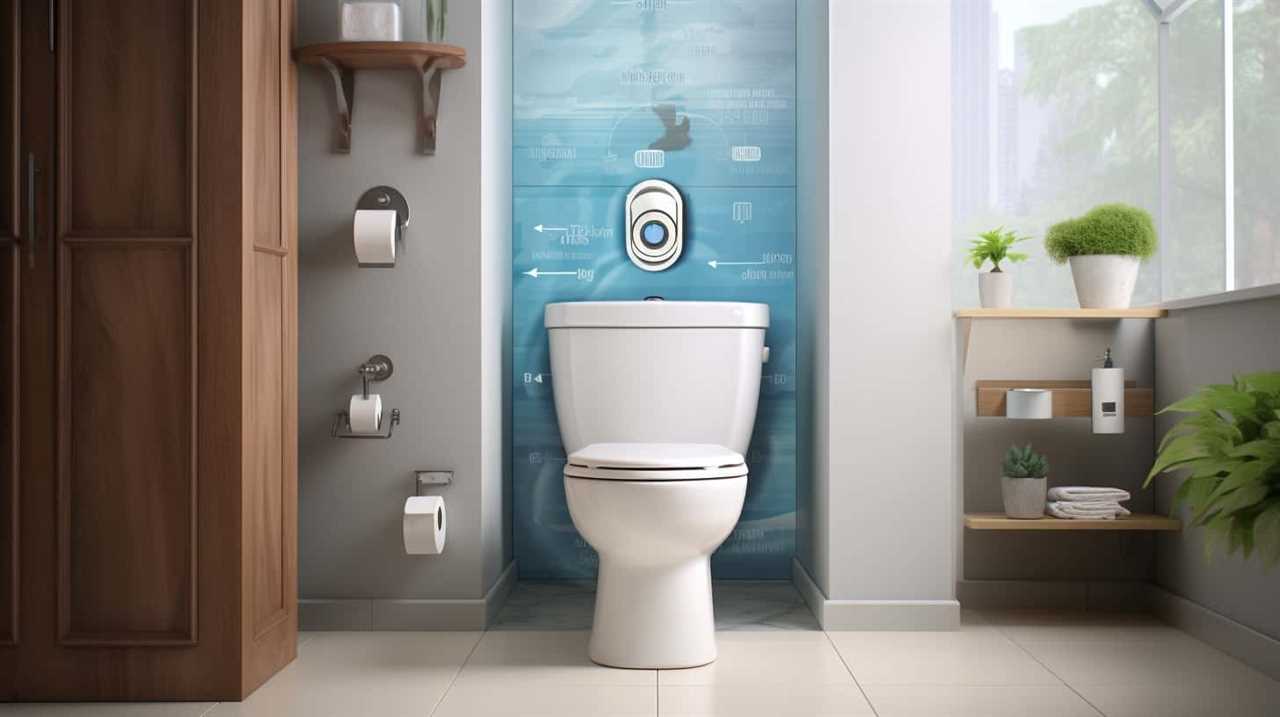
Key Takeaways
- Flushing toilet paper is generally allowed in Puerto Del Carmen.
- The plumbing system is designed to handle toilet paper disposal and is well-maintained.
- Flushing toilet paper saves time and effort compared to separate disposal methods.
- Proper disposal of other bathroom waste such as baby wipes and sanitary napkins is essential to prevent clogs and protect the environment.
Plumbing Infrastructure in Puerto Del Carmen
When it comes to the plumbing infrastructure in Puerto Del Carmen, we’ve found that flushing toilet paper is generally allowed. The water quality in Puerto Del Carmen is exceptional, and the plumbing system is designed to handle the disposal of toilet paper without any issues. The pipes and sewer system are well-maintained, ensuring smooth and efficient waste disposal.
This not only guarantees a hygienic and comfortable experience for residents and visitors but also has a positive environmental impact. By allowing the flushing of toilet paper, Puerto Del Carmen minimizes the need for additional waste management measures and reduces the amount of waste that ends up in landfills.
This responsible approach not only preserves the pristine beauty of the area but also helps to maintain the delicate balance of the ecosystem.
Benefits of Flushing Toilet Paper
Flushing toilet paper in Puerto Del Carmen offers numerous benefits for both residents and the environment. Not only does it contribute to the convenience and hygiene of daily life, but it also has a positive environmental impact. By flushing toilet paper, residents can avoid the hassle of disposing of it in a separate trash bin, saving time and effort. Additionally, it helps maintain a cleaner and more pleasant bathroom environment, reducing the risk of odors and bacteria. From an environmental standpoint, flushing toilet paper eliminates the need for additional waste management processes, reducing the overall carbon footprint. Here is a table summarizing the benefits of flushing toilet paper in Puerto Del Carmen:
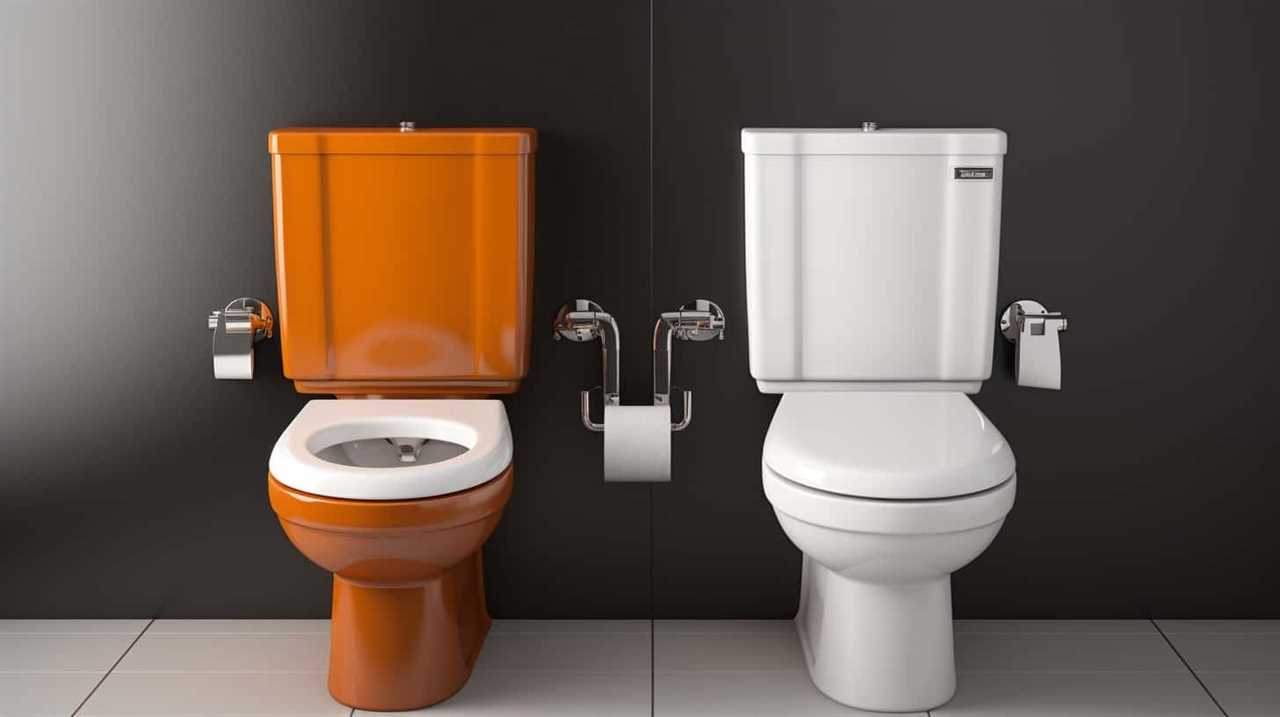
| Benefits |
|---|
| Convenience |
| Hygiene |
| Environmental Impact |
Proper Disposal of Other Bathroom Waste
To ensure proper sanitation and waste management, we must address the appropriate disposal of other bathroom waste in Puerto Del Carmen.
While we’ve discussed the flushing of toilet paper, there are other items that shouldn’t be flushed down the toilet. Proper disposal methods are crucial to prevent clogs and protect the environment.
Items such as baby wipes, sanitary napkins, and cotton swabs should be placed in a waste bin instead of being flushed. These items don’t break down easily and can cause blockages in the sewage system. When flushed, they can also end up in rivers and oceans, contributing to pollution and harming marine life.
Tips for a Smooth Flushing Experience
To ensure a smooth flushing experience and prevent any potential clogs, we can follow a few simple tips:
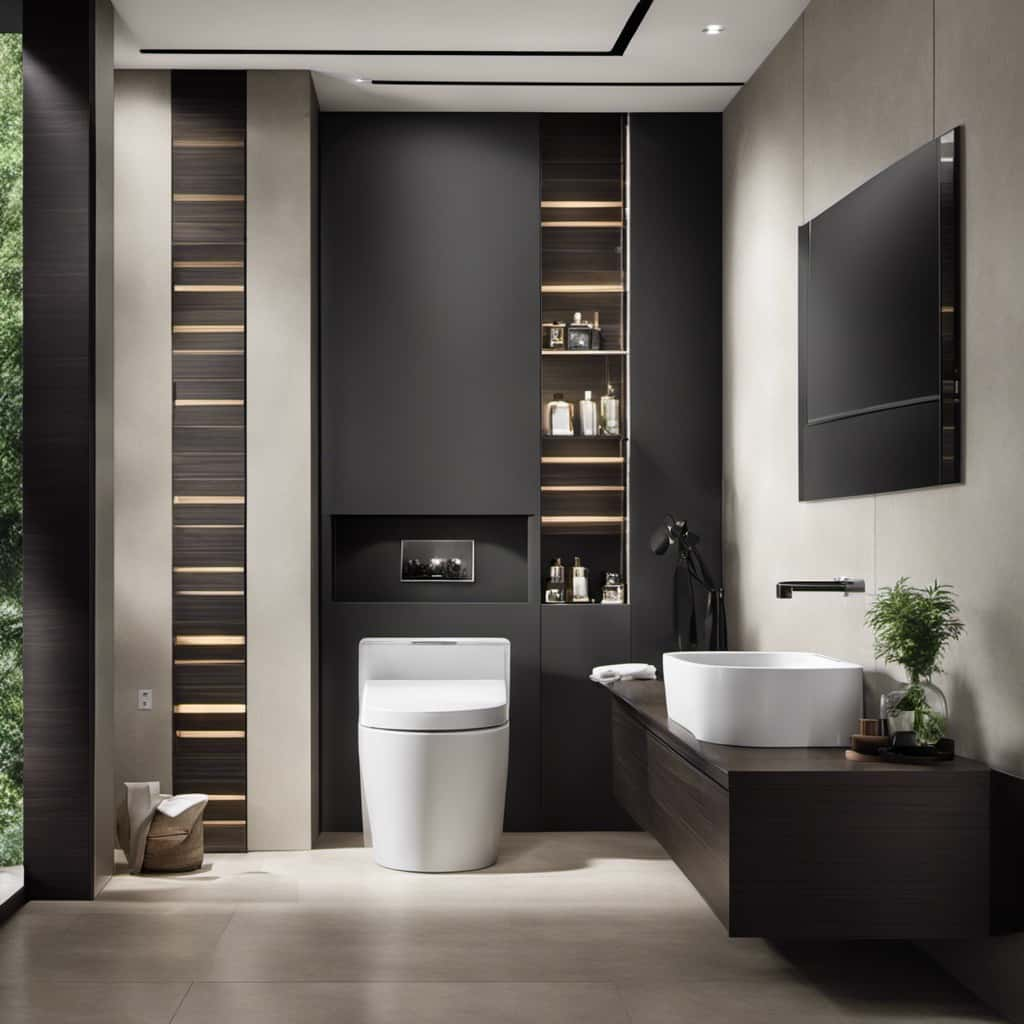
- Use the right amount of toilet paper: One or two squares should be enough for most tasks. Avoid excessive use to prevent clogging.
- Consider toilet paper alternatives: If you’re looking for eco-friendly bathroom options, consider using bidets or wet wipes specifically designed to be flushed.
- Flush properly: After using the toilet, make sure to hold down the flush lever until all the waste and toilet paper have been completely flushed away. This will help prevent any lingering debris from causing a clog.
- Regular maintenance: Keep your toilet in good condition by performing regular maintenance, such as checking for leaks, cleaning the flush holes, and using a plunger if necessary.
Considerations for Travelers With Sensitive Plumbing Systems
When traveling to Puerto Del Carmen, it’s important for us to consider the sensitivity of our plumbing systems. This is especially true for those of us who are traveling with septic systems or have eco-friendly alternatives in mind.
Septic systems are designed to treat and dispose of wastewater, but they can be easily overwhelmed by excessive toilet paper usage or other non-biodegradable materials.
To prevent any plumbing issues during our trip, it’s advisable to use eco-friendly alternatives such as bidets or wet wipes that are specifically designed to be flushed down the toilet. These alternatives aren’t only gentle on our plumbing systems but also help us reduce our environmental impact.
Frequently Asked Questions
Can I Flush Baby Wipes or Other Non-Flushable Products Down the Toilet in Puerto Del Carmen?
Yes, we can flush toilet paper in Puerto Del Carmen. However, it is important to note that non-flushable products, such as baby wipes, should not be flushed. There are alternative toilet paper options available.

Are Bidets Commonly Found in Bathrooms in Puerto Del Carmen?
Bidets aren’t commonly found in bathrooms in Puerto Del Carmen. Instead, many people use alternative methods for disposing of toilet paper, such as placing it in a bin. This practice helps prevent plumbing issues.
Is It Safe to Drink Tap Water in Puerto Del Carmen?
Yes, it is safe to drink tap water in Puerto Del Carmen. The tap water quality is excellent. However, if you prefer alternatives, bottled water is widely available and many restaurants offer filtered water.
How Often Are the Sewage Systems in Puerto Del Carmen Maintained and Cleaned?
Yes, we maintain and clean the sewage systems in Puerto Del Carmen regularly. Our team ensures the frequency of sewage system maintenance is sufficient to keep them functioning properly. Our cleaning procedures are thorough and effective.
Are There Any Specific Rules or Regulations Regarding Toilet Paper Disposal in Puerto Del Carmen?
Yes, there are specific regulations in Puerto Del Carmen regarding toilet paper disposal. It is important to follow these rules to avoid clogging the sewage system and causing environmental damage by flushing non-flushable products.

Conclusion
So, can you flush toilet paper in Puerto Del Carmen?
The answer is yes! With its modern plumbing infrastructure, you can enjoy the convenience of flushing toilet paper without any worries.
Just remember to dispose of other bathroom waste properly to keep the system running smoothly.
Whether you’re a traveler or a local, these tips will ensure a hassle-free flushing experience.
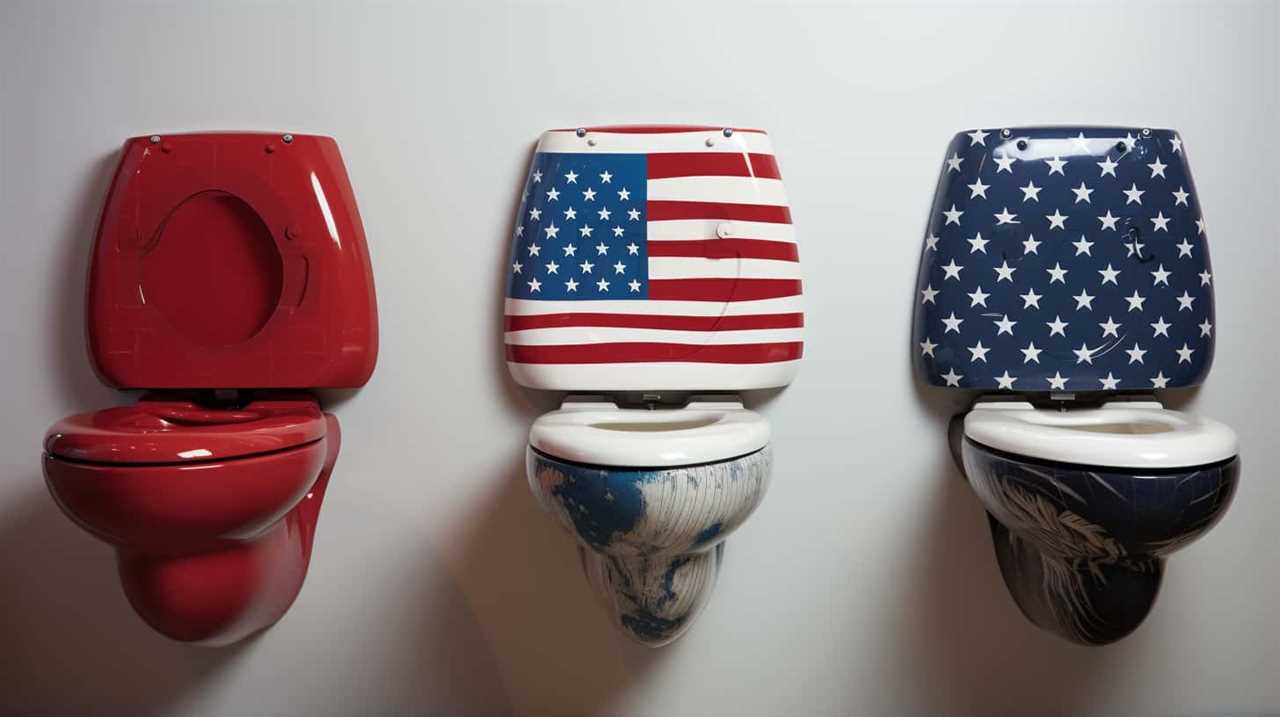
So go ahead, relax, and let the toilet paper disappear with a satisfying whoosh, leaving you with a clean and refreshed feeling.
With an impeccable eye for detail and a passion for bathroom-related, Ava leads our editorial team gracefully and precisely.
Under her guidance, Best Modern Toilet has flourished as the go-to resource for modern bathroom enthusiasts. In her free time, you might find Ava exploring antique shops and looking for vintage bathroom fixtures to add to her collection.
Bathtub
What to Do if You Flush a Large Object Down the Toilet

Have you ever been in a situation where a large object gets flushed down the toilet? It can be a troublesome predicament that needs immediate attention.
Well, fear not! In this article, we will guide you through the steps you need to take to handle this plumbing crisis with ease. From assessing the situation to seeking professional help if needed, we’ve got you covered.
So, let’s dive in and master the art of toilet rescue!
Key Takeaways
- Assess the situation by examining the toilet bowl, checking for signs of leakage, and inspecting the surrounding area for water damage.
- Stop the water flow by locating and turning off the shut-off valve near the base of the toilet to prevent further water from entering the bowl.
- If possible, retrieve the object using a toilet auger or a long-handled tool with a hook, being careful not to push it further into the drain.
- If unable to retrieve the object, consider using a plumbing snake to break up the clog or hook onto the object. If the situation becomes complex, seek professional help from a plumber specializing in toilet repairs and blockage removal.
Assess the Situation
First, we need to assess the situation and determine the severity of the problem after flushing a large object down the toilet. Assessing the damage is crucial in order to take immediate action.

Start by examining the toilet bowl to see if it’s filled with water or overflowing. Take note of any signs of leakage or unusual sounds coming from the pipes. Carefully inspect the surrounding area for any water damage or wet spots on the floor. This will help you understand the extent of the problem and guide your next steps.
Once you have assessed the situation, you can move on to stop the water flow and prevent further damage.
Stop the Water Flow
To stop the water flow after flushing a large object down the toilet, we can use a shut-off valve located near the base of the toilet. This valve is typically a small, round knob that can be turned clockwise to shut off the water supply to the toilet.
By doing this, you can prevent any further water from entering the toilet bowl and potentially causing more damage or flooding. It’s important to act quickly in order to minimize the risk of overflowing and water damage to your bathroom.

Once the water flow has been stopped, you can then proceed to assess the situation and determine the best course of action to remove the object and prevent future plumbing mishaps.
Remember to always exercise caution when dealing with plumbing issues and consider seeking professional help if needed.
Retrieve the Object (If Possible)
After stopping the water flow, we can now focus on retrieving the object from the toilet. It’s important to approach this task with caution to avoid causing further damage to the toilet.
First, put on a pair of rubber gloves to protect your hands.

Use a toilet auger or a long-handled tool with a hook at the end to carefully reach into the toilet bowl and try to grasp the object. Gently maneuver the tool around the object, being mindful not to push it further into the plumbing system.
If the object is within reach, carefully lift it out of the toilet. If you encounter any resistance or are unable to retrieve the object, it’s best to stop and call a professional plumber to avoid causing further toilet damage.
Transitioning to the next section, if retrieving the object manually isn’t possible, you can try using a plumbing snake.
Use a Plumbing Snake
Now, let’s move on to using a plumbing snake to retrieve the object from the toilet. A plumbing snake is a handy tool that can be used to unclog toilets and pipes. It consists of a long, flexible metal cable with a coiled end. Here’s how you can use a plumbing snake to tackle the clog and retrieve the flushed object:
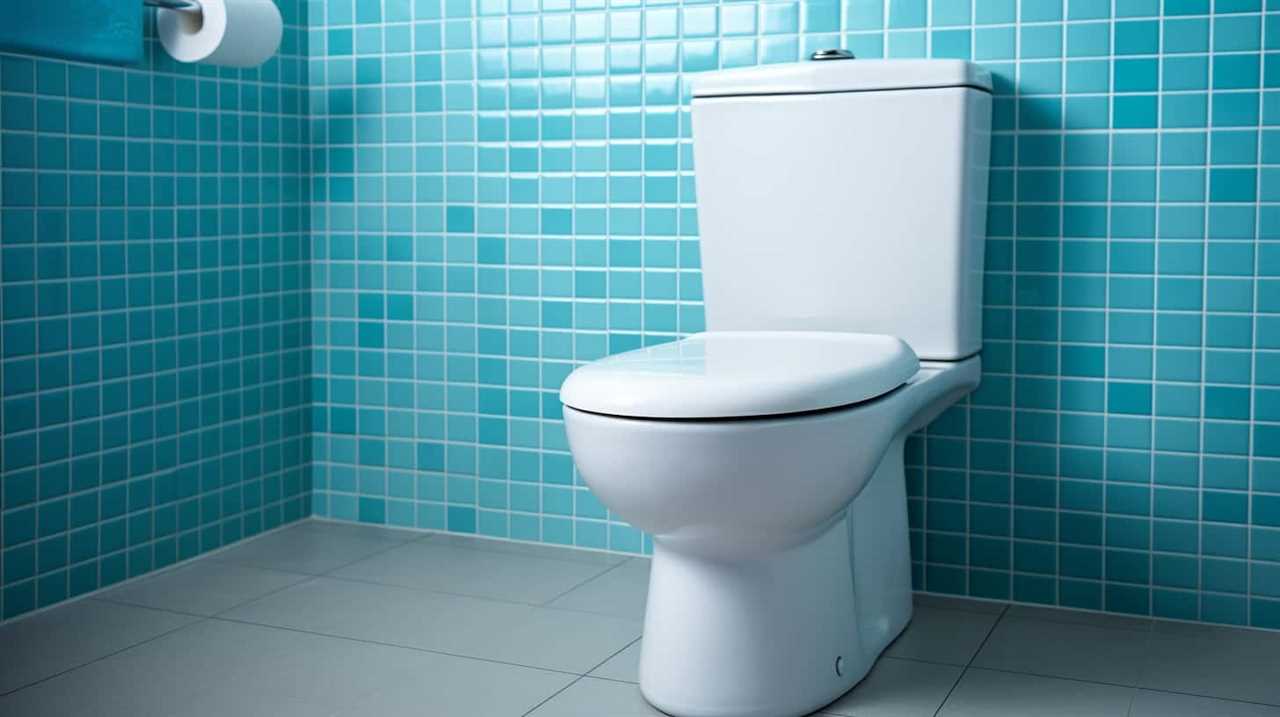
| Step | Instructions |
|---|---|
| 1 | Put on gloves and protective eyewear. |
| 2 | Insert the coiled end of the plumbing snake into the toilet bowl. |
| 3 | Slowly rotate the handle of the snake clockwise to feed it into the drain. |
| 4 | Continue pushing the snake further into the drain until you feel resistance. |
| 5 | Rotate the handle counterclockwise to break up the clog or hook onto the object. |
| 6 | Gently pull the snake back out, taking care not to damage the toilet bowl. |
| 7 | Dispose of the flushed object properly and flush the toilet to ensure it is unclogged. |
Using a plumbing snake is an effective DIY plumbing method to retrieve objects and unclog toilets. Remember to follow these steps carefully to avoid causing further damage.
Seek Professional Help if Necessary
If the object can’t be retrieved using a plumbing snake, we may need to seek professional help. In such cases, it’s advisable to contact a plumber who specializes in toilet repairs and blockage removal. Professional plumbers have the necessary tools, expertise, and experience to handle more complex situations. They can utilize advanced techniques like hydro jetting or drain cameras to locate and remove the object safely.
Seeking professional help ensures that the issue is resolved efficiently and effectively, minimizing any further damage to the plumbing system. Additionally, it’s important to learn from the experience and take steps to prevent future accidents. This includes being mindful of what gets flushed down the toilet and considering the use of drain screens or toilet locks to avoid similar situations in the future.
Frequently Asked Questions
Can I Use a Plunger to Try and Retrieve the Object?
Yes, we can try using a plunger to retrieve the object, but if it doesn’t work, we should consider calling a professional plumber or exploring alternative methods to safely remove the object.
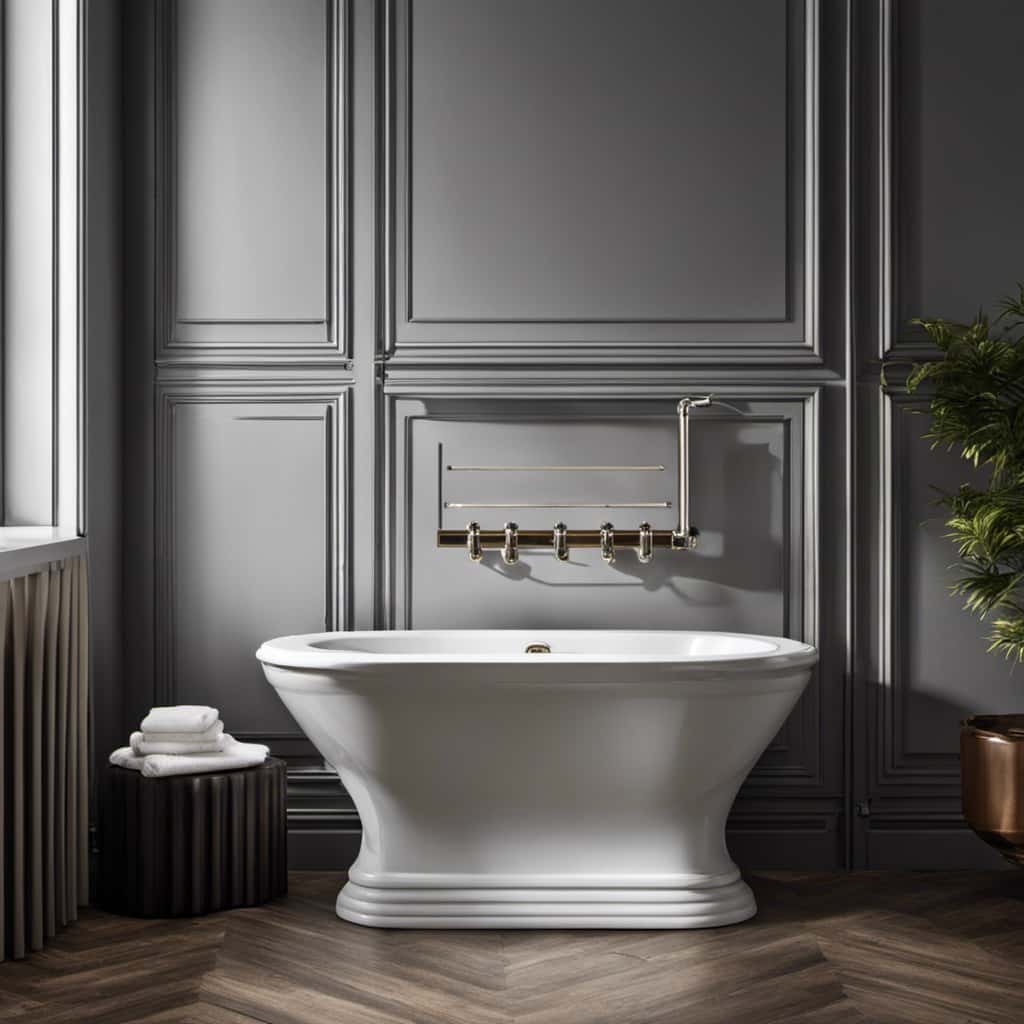
What Are Some Signs That the Object May Have Caused a Blockage in the Plumbing System?
If you notice slow draining, gurgling sounds, or water backing up in other fixtures, these are signs that a large object may have caused a blockage in the plumbing system. To prevent this, be mindful of what you flush and consider using a toilet lock.
Can I Use Chemical Drain Cleaners to Dissolve the Object?
We don’t recommend using chemical drain cleaners to dissolve the object. There are alternative methods, such as using a plunger or a plumbing snake, that are more effective and won’t cause further damage. If these methods don’t work, it’s best to seek professional assistance.
Are There Any Potential Dangers or Risks Associated With Using a Plumbing Snake?
When using a plumbing snake, there are potential risks if not used properly. It is important to follow the proper usage instructions to avoid damaging the pipes or causing further clogs.
Will My Homeowner’s Insurance Cover the Cost of a Professional Plumber if Needed?
Yes, homeowner’s insurance may cover the cost of a professional plumber if needed. However, it’s important to consider DIY methods first to avoid potential risks and dangers.
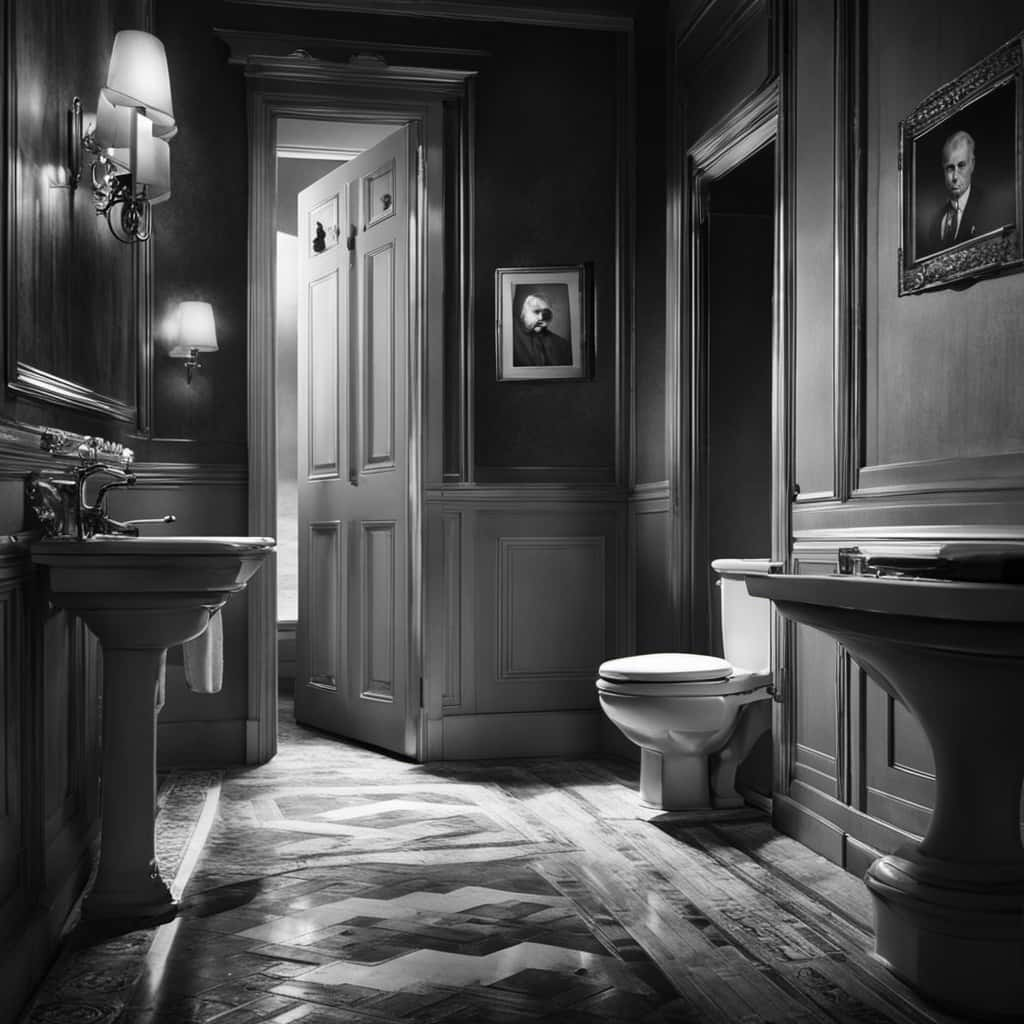
Conclusion
In conclusion, if you find yourself in the unfortunate situation of flushing a large object down the toilet, it’s important to assess the situation calmly and act quickly.
Stop the water flow, try to retrieve the object if possible, and use a plumbing snake if needed. Remember, seeking professional help may be necessary to resolve the issue completely.
Don’t let this mishap send you down the drain like a ship without a captain – take control and tackle the problem head-on.
With an impeccable eye for detail and a passion for bathroom-related, Ava leads our editorial team gracefully and precisely.
Under her guidance, Best Modern Toilet has flourished as the go-to resource for modern bathroom enthusiasts. In her free time, you might find Ava exploring antique shops and looking for vintage bathroom fixtures to add to her collection.
-

 Reviews2 months ago
Reviews2 months agoBest Toilet Air Freshener: Top 10 Picks for a Fresh-Smelling Bathroom [2024]
-

 FAQ - Advanced Bathroom Queries3 months ago
FAQ - Advanced Bathroom Queries3 months agoWhat Size Pipe for Toilet Drain
-

 FAQ - Advanced Bathroom Queries3 months ago
FAQ - Advanced Bathroom Queries3 months agoGuide: How to Use Drano Max Gel in Your Toilet
-

 FAQ - Advanced Bathroom Queries1 month ago
FAQ - Advanced Bathroom Queries1 month agoWhich Countries Use Bidets the Most
-

 FAQ - Advanced Bathroom Queries3 months ago
FAQ - Advanced Bathroom Queries3 months agoWhy Does My Poop Leave Streaks in the Toilet
-

 Reviews2 months ago
Reviews2 months agoBest Waterless Toilets: Top Options for Eco-Friendly Bathrooms [2024]
-

 Buying Guides2 months ago
Buying Guides2 months agoWhat to Do When You Accidentally Flushed Something Down the Toilet
-

 FAQ - Advanced Bathroom Queries3 months ago
FAQ - Advanced Bathroom Queries3 months agoHow Do Toilets Work in Bali






















